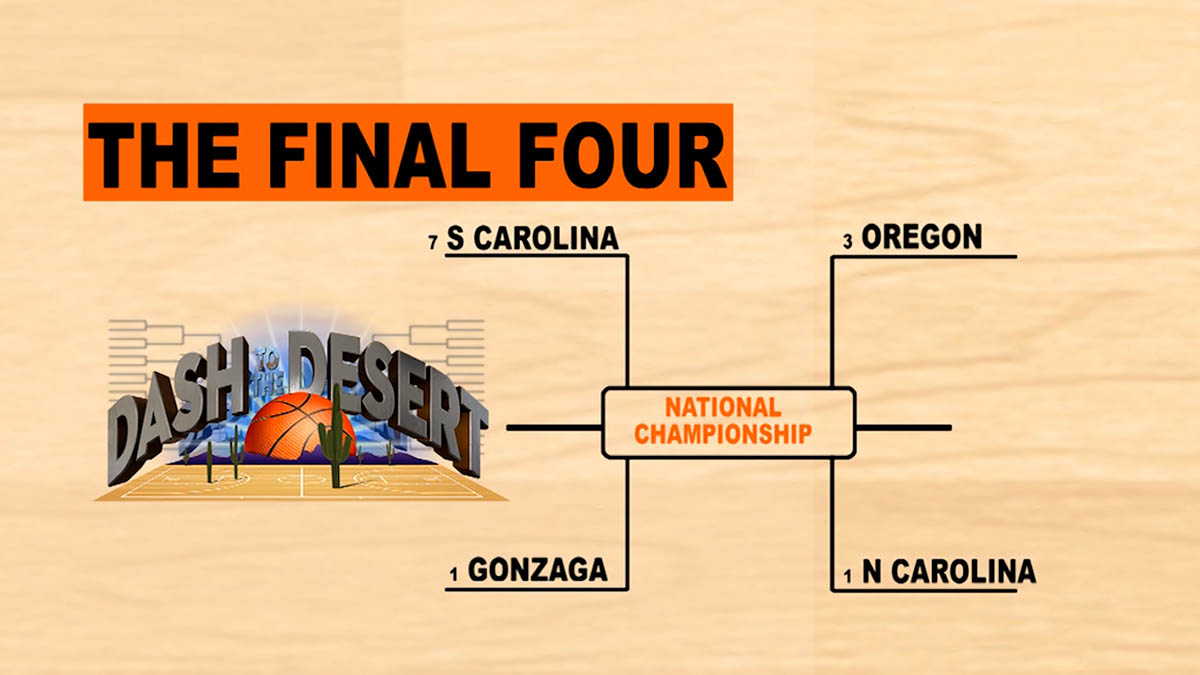Let’s face it, the first weekend of the NCAA Tournament lacked the sizzle that has come to define it for decades. Very few back-and-forth battles or buzzer beaters. Thankfully Florida & Wisconsin livened things up in the Sweet 16 and then Kentucky and Carolina kicked it up another notch in a thrilling Elite 8 match-up not decided until a transition jumper with .3 seconds remaining.
Now our Final Four is filled out: One-seeds North Carolina and Gonzaga are joined by third seed Oregon and seventh seed South Carolina. Here are a few tidbits.
Fresh faces.
Sure, North Carolina returns to another Final Four, its 20th, the all-time NCAA leader in that category. But Oregon makes just its second appearance in school history and first since 1939, when the NCAA Tournament played second fiddle to the NIT. And Gonzaga and South Carolina make maiden voyages to college basketball’s biggest stage.
It’s great for the sport; new faces in the spotlight — though Kansas and Florida may feel differently. The pacific flavor is novel also, with the Ducks and Bulldogs helping to shift the east coast biased college basketball community lens westward. With those two schools being on opposite sides of the bracket, it gives us a shot at an all west final; or an ole’ fashioned colony fight, with the potential for North and South Carolina to face off for a National Championship. Entertaining story-lines.
[cta id=’4119′]
Make shot, go to class.
It’s no secret that Luke Maye’s game winner (off as under control, yet knifing, transition push as you’ll see from Theo Pinson) stole the show on Sunday night’s 75-73 thriller over Kentucky. From there, it’s about an hour and half flight from Memphis to Raleigh and then a short drive back to Chapel Hill. A long day for the sophomore suddenly turned hero.
The next morning, Maye arrived for his 8am business class and was given a standing ovation. From there the articles flowed, not about the standing ovation (well deserved), but about the diligence of Maye in showing up for class; lauding the student-athlete for being there. This isn’t about Maye, at all, who by all accounts is a great and responsible kid. But it is a reflection of our society, which now praises a student-athlete for doing, well, what a kid should do. You wake up, you go to class.
I know it was a long and exhausting night for Maye, just as perhaps it was for the engineering student working with her team on a group project until 1:30am or the frat kid crushing 20 beers. All should do their best to show up for class the next morning, and certainly shouldn’t be villainized if they don’t. It just doesn’t qualify as national news to me that Maye did. Maybe I’m getting old.
[cta id=’4117′]
More in the tank for Dorsey?
Oregon and North Carolina, just like Carolina and Kentucky, is a game rife with play-makers and superior athletes. Oregon’s length gave Kansas problems all day long in their Elite 8 match-up and is a commonly shared trait among teams capable of making a championship run. Jordan Bell (8 blocks vs. KU) continues to patrol the middle – without fouling – and the entire team has stepped up in Chris Boucher’s absence. None more so than Tyler Dorsey who, is averaging 24.5ppg in the NCAA Tournament on absurd (yes, ABSURD) 67% shooting from the field (34-51). In his last seven games, he’s averaging 21ppg. Contrast that with the 9ppg average he sported in the five games before beginning this remarkable run.
[cta id=’4114′]
Watch turnovers in Zags/Gamecocks game.
The South Carolina/Gonzaga match-up pits two stout defenses against one another. Both are as difficult to score on as you’ll find. That’s why I’ve got my eye on turnovers and, in particular, live ball turnovers. During the regular season, South Carolina ranked fourth in the nation in turnover percentage – causing opponents to give it right back 24.5 percent of the time. In the NCAA Tournament, Frank Martin’s team is forcing 17 turnovers per game. On the other hand, Gonzaga doesn’t force TOs at nearly as high a clip, but is one of the nation’s best in taking care of the ball, turning it over in only about 16 percent of their possessions. A turnover rate of 20 percent is considered average. With buckets at premium in this one — this is the game within the game to watch. Less than 13 turnovers for the Zags and they’ll be in good shape. More than the unlucky 13 and Martin’s boys might just play for the national title on Monday.




